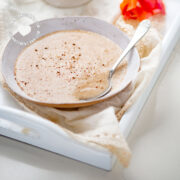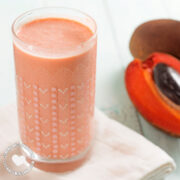I am pretty sure everyone looking for our Dominican spaghetti recipe is coming here because they have tried it and cannot get it out of their heads, or they miss the flavors of home. Make our awesome Espaguetis, and surprise friends and family with this unusual but flavorful spaghetti dish. Be prepared for encores.
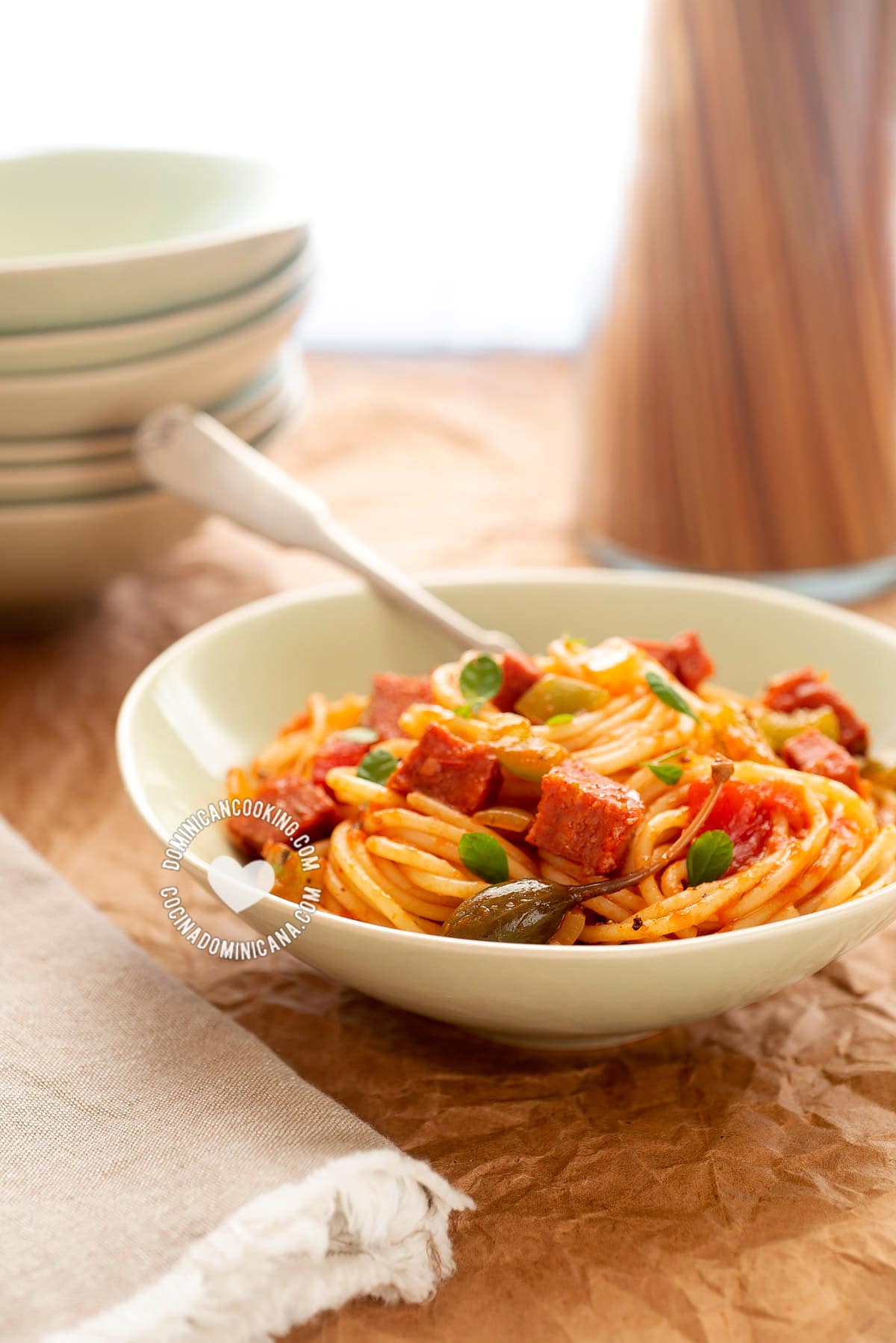
Why we ❤️ it
Dominican espaguetis can shock many foreigners who have never tried it before. Although it's not the only Dominican spaghetti dish that breaks some rules (looking at you, Pastelón de Espagueti!), this is a dish not without merits.
Dominicans love Dominican spaghetti, and they are – alongside Pescado frito, Batata frita, and Yaniqueque – the quintessential beach day meal. Plentiful, flavorful, and inexpensive, there's much to love about it.
Spaghetti a la Dominicana
Dominican spaghetti is a traditional Dominican dish made with Dominican salami, a tomato sauce with vegetables, and – at some homes – evaporated milk.
But I'll let a Canadian friend tell you her experience with Dominican espaguetis:
"I was caught off-guard the first time I was served a plate of Dominican espaguetis, having always been accustomed to my pasta al dente, a la italiana. [Keep reading...]
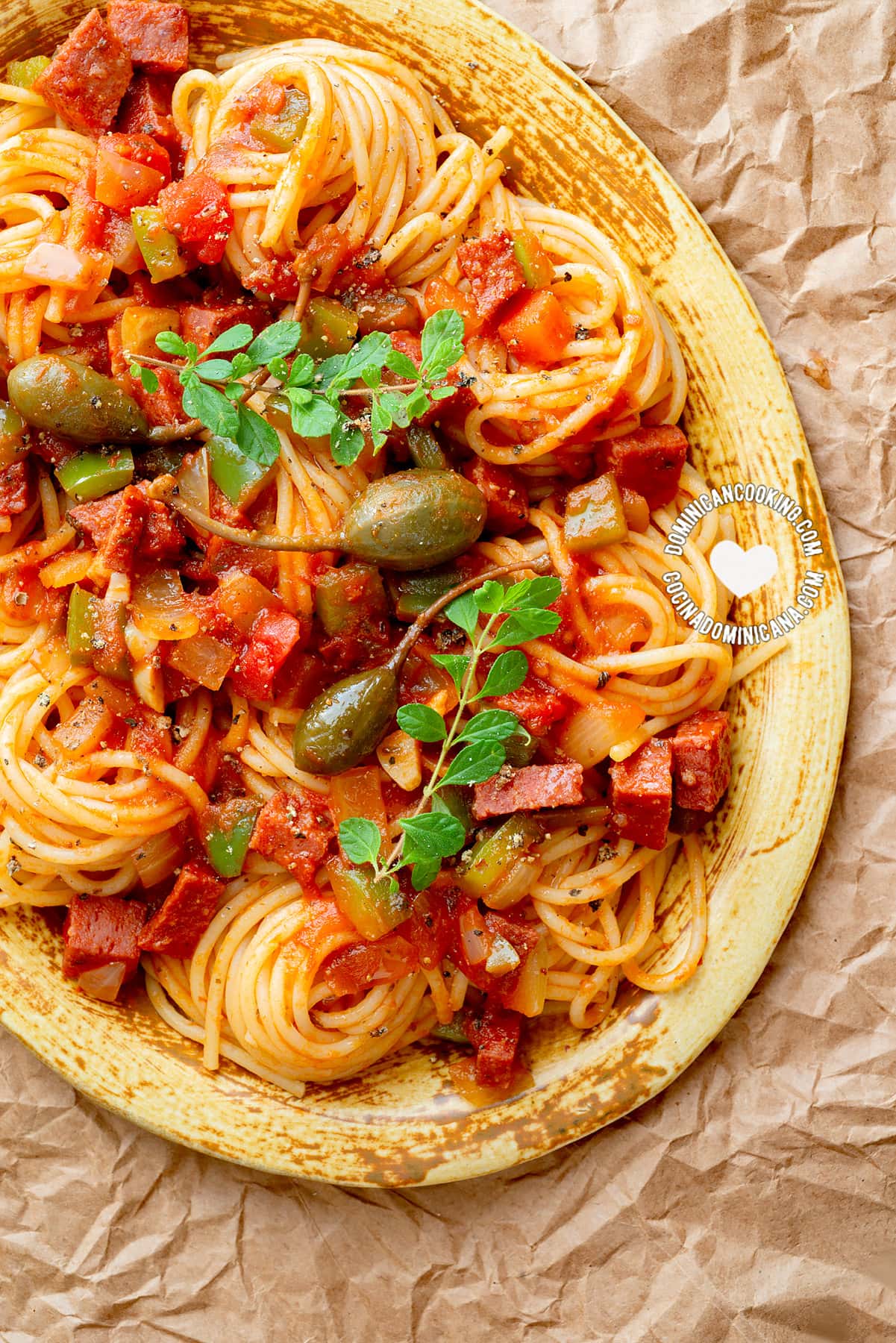
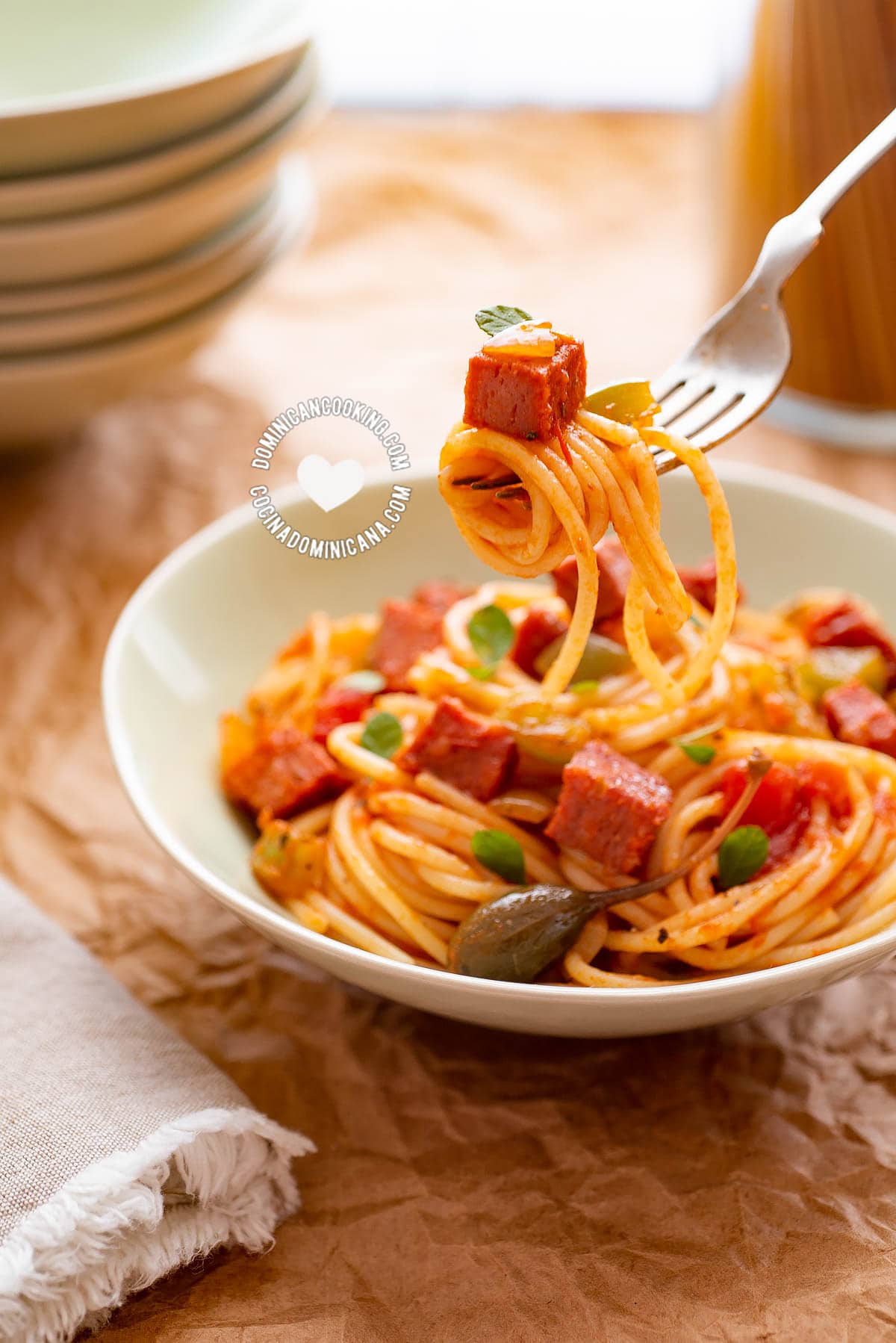
Espaguetis (Dominican spaghetti)
Top tips
No Dominican "salami"? You can try it with our homemade salami recipe, or use supermarket roasted chicken for an easy Espagueti con Pollo Dominicano. Or use ham or sliced pork sausage if you feel adventurous.
Do not add vinegar if you are using milk. Both ingredients are optional, as there are no two homes where this dish is made the same. Both versions have their fans, I love both.
Serving suggestions
I love Dominican spaghetti on its own or with Tostones. But there's no beach trip without large quantities of espagueti and a bag of Pan de agua at hand to go with it, or a big pot of rice even to feed the crowd.
Recipe
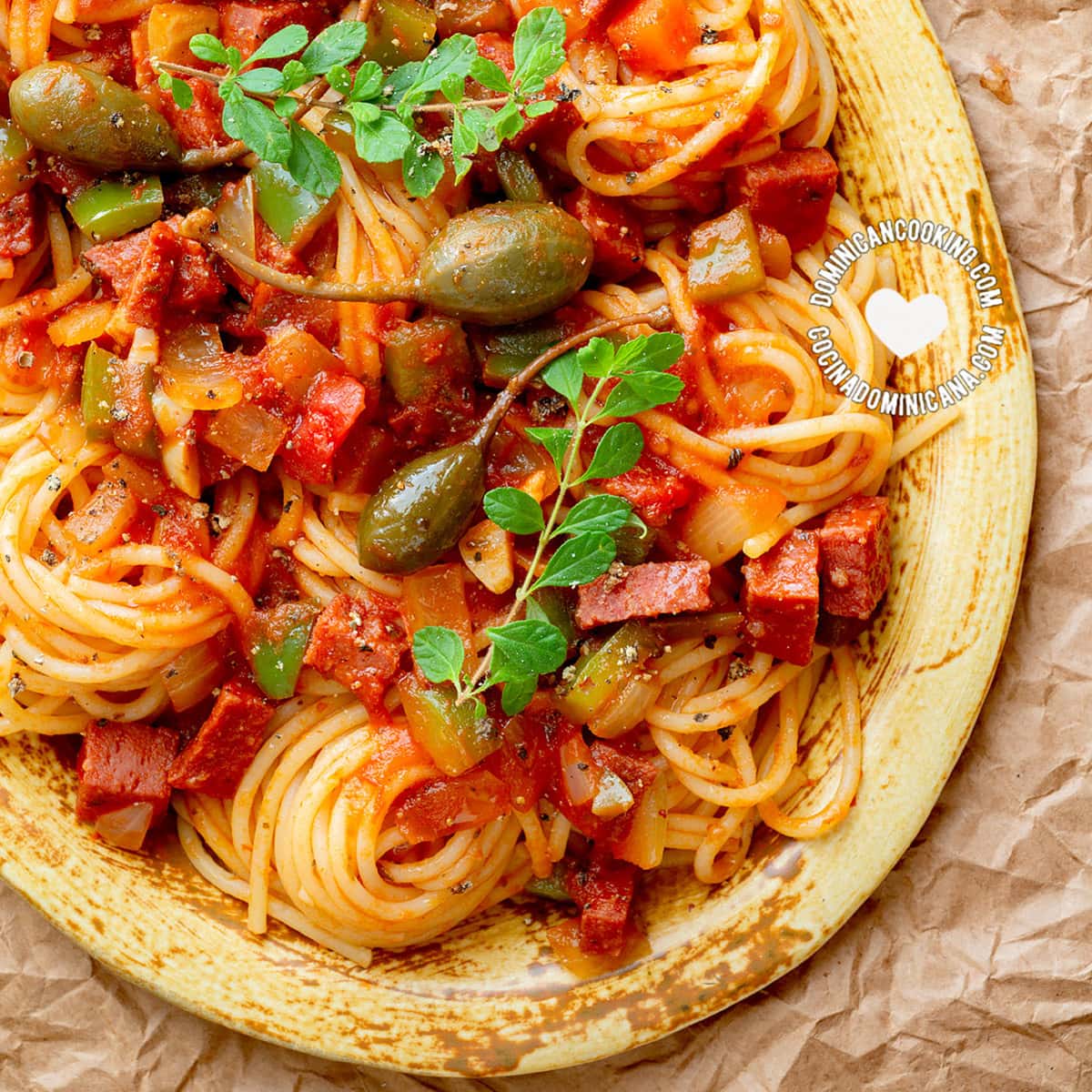
[Recipe + Video] Espaguetis Dominicanos (Spaghetti a la Dominicana)
Ingredients
- 1 pound spaghetti, [0.43 kg]
- 1½ tablespoon salt
- 1 pound Dominican "salami", [0.43 kg] (Amazon affiliate link)
- 2 tablespoon olive oil
- 1 red onion, large diced
- 1 green bell pepper, or red bell pepper cut into small cubes
- ¼ cup pitted green olives
- 2 garlic cloves, crushed
- 1 tablespoon capers, (optional)
- 4 plum tomato, cut into small cubes
- ¼ teaspoon oregano (dry, ground)
- 2 cups tomato sauce
- ¼ tablespoon vinegar, (optional)
- ½ cup evaporated milk, (optional)
- ¼ teaspoon pepper (freshly-cracked, or ground), or to taste
- ¼ cup grated Parmesan cheese, (optional)
Instructions
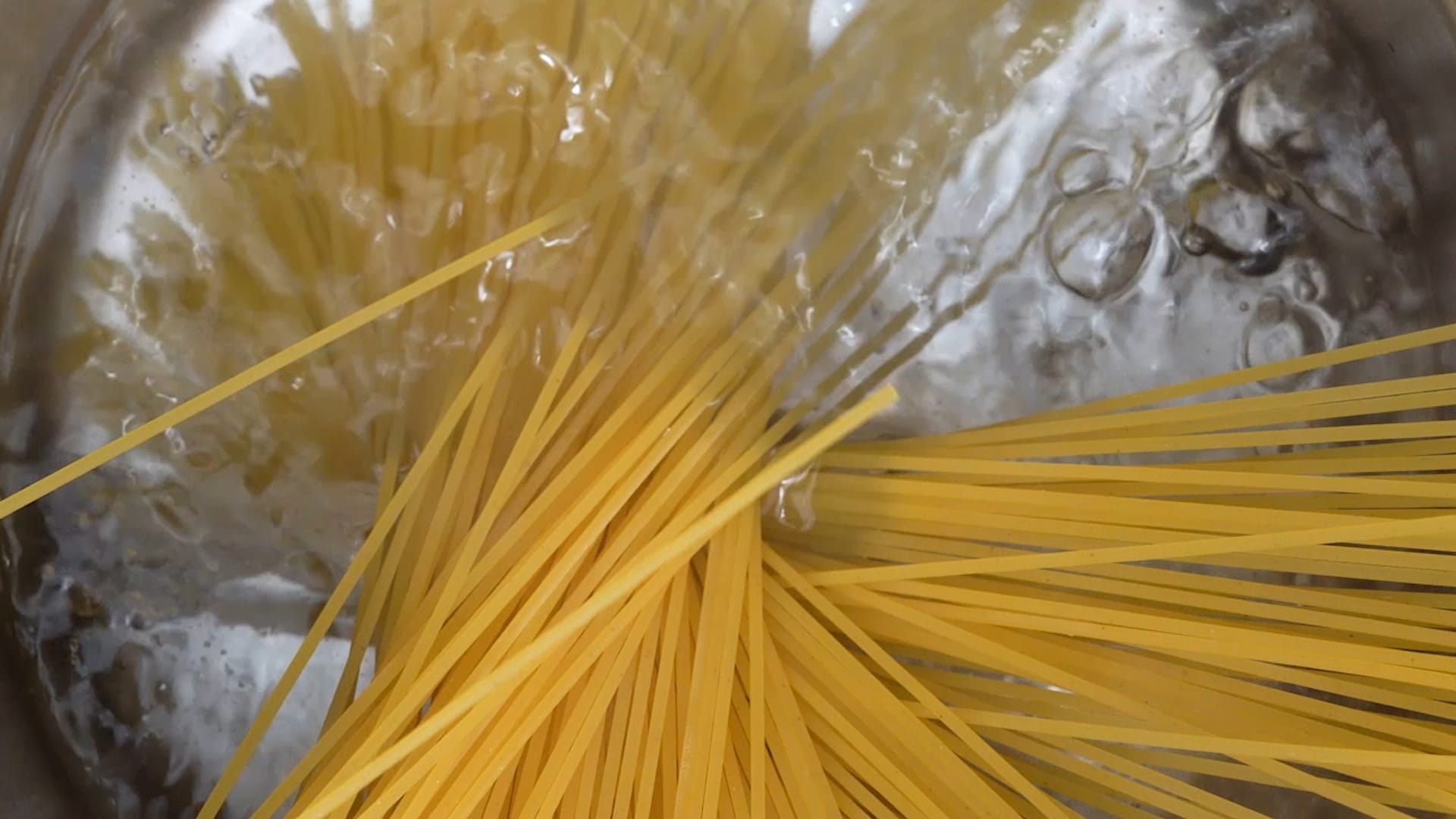 Boil the spaghetti in enough water to cover them (about ½ galón [2 liters]) until slightly softer than al dente, having added 1 tablespoon of salt to the boiling water (set aside remaining salt). Drain the water and set the spaghetti aside.
Boil the spaghetti in enough water to cover them (about ½ galón [2 liters]) until slightly softer than al dente, having added 1 tablespoon of salt to the boiling water (set aside remaining salt). Drain the water and set the spaghetti aside.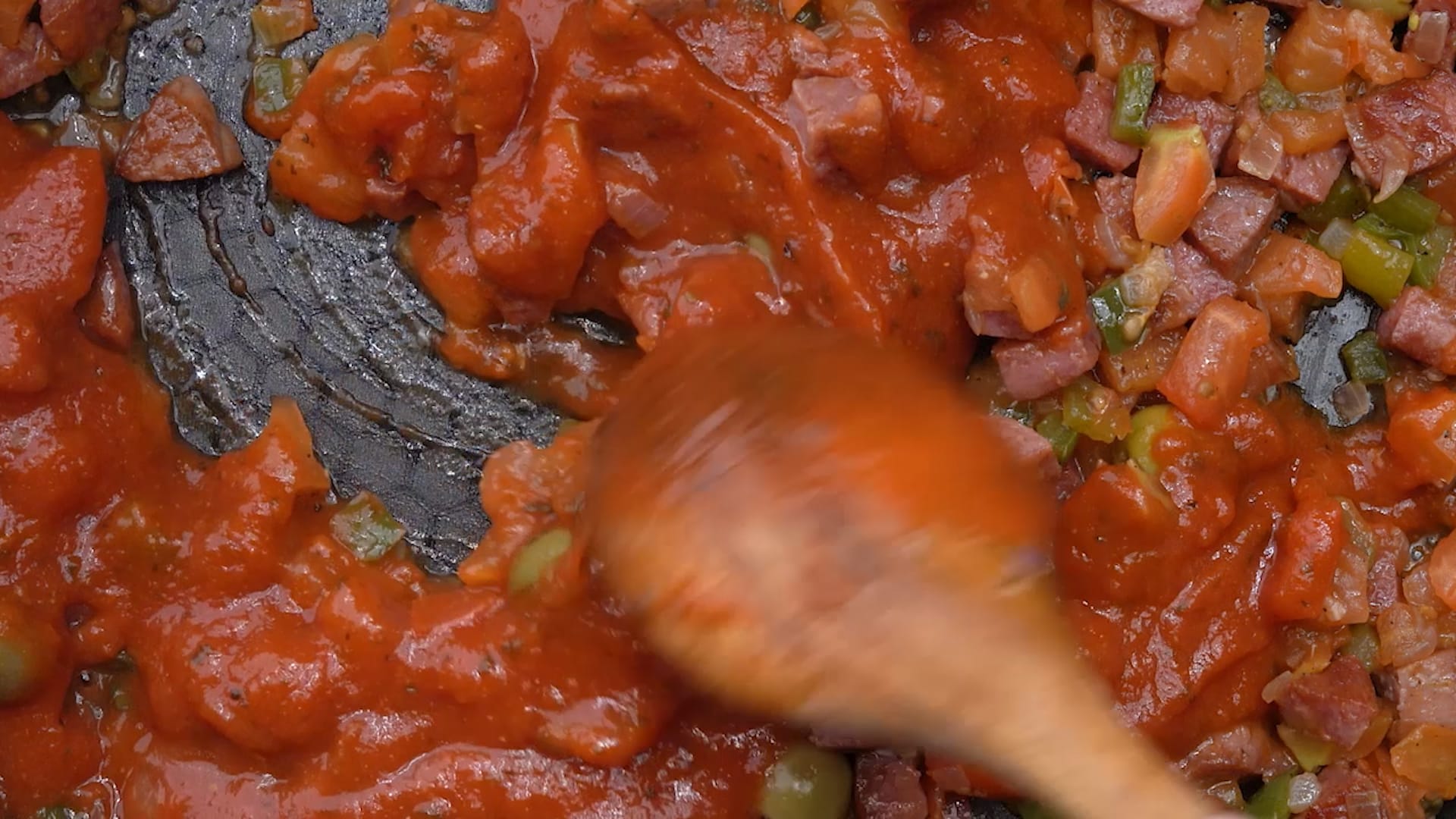 While the spaghetti is boiling, heat oil in a large skillet or pot over medium heat. Cut the salami into cubes. Cook and stir the salami until it browns. Lower heat to medium-low. Add onions, bell pepper, olives, garlic, and capers and cook and stir for a minute or until onions become translucent. Add tomatoes and oregano, simmer covered until the tomatoes are cooked through (3-5 mins). Stir in tomato sauce and vinegar (do not add vinegar if you'll use milk). Stir to mix.
While the spaghetti is boiling, heat oil in a large skillet or pot over medium heat. Cut the salami into cubes. Cook and stir the salami until it browns. Lower heat to medium-low. Add onions, bell pepper, olives, garlic, and capers and cook and stir for a minute or until onions become translucent. Add tomatoes and oregano, simmer covered until the tomatoes are cooked through (3-5 mins). Stir in tomato sauce and vinegar (do not add vinegar if you'll use milk). Stir to mix.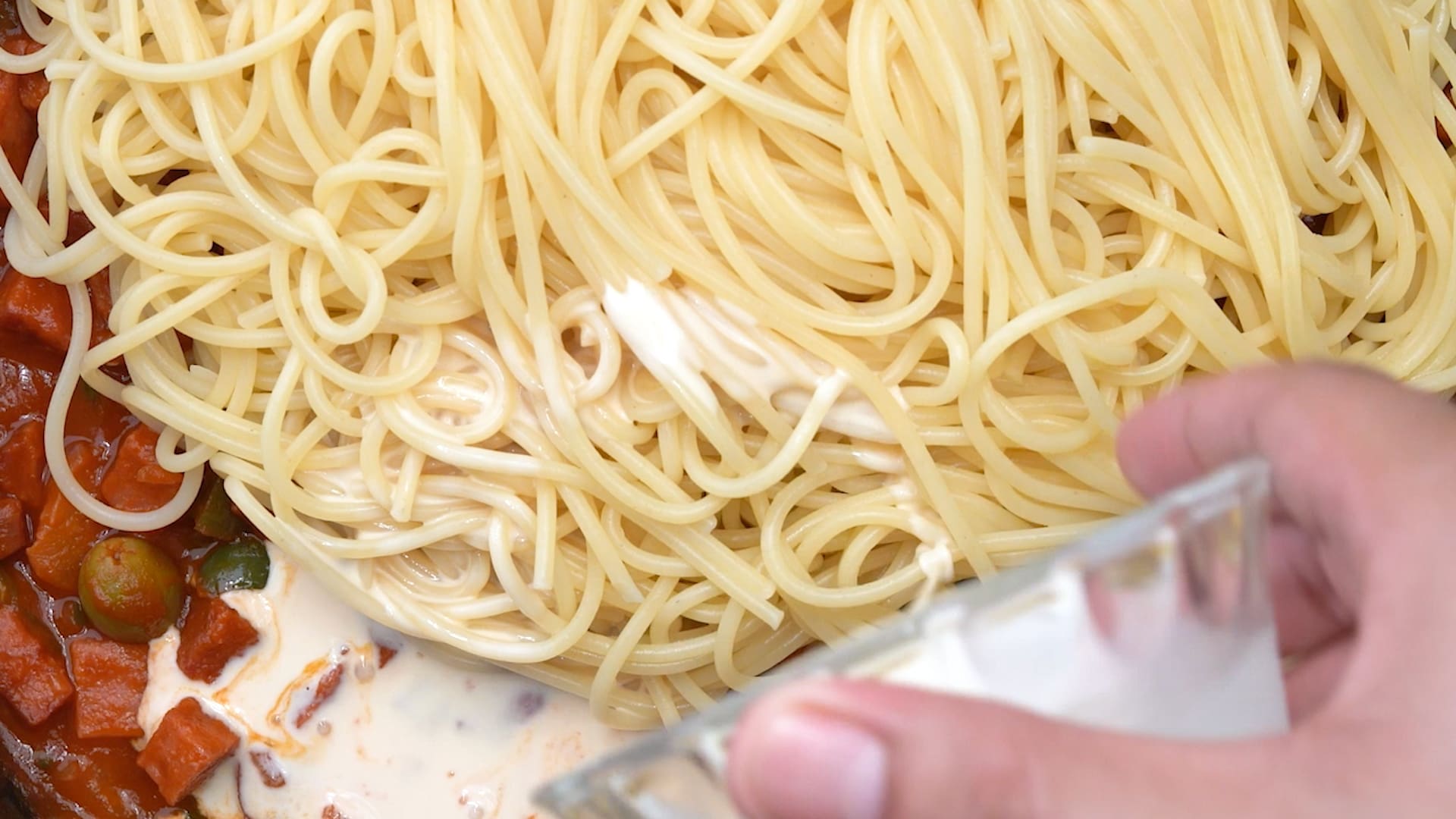 Add milk and the boiled spaghetti and mix well. Stir until the milk is mixed through, but do not let it boil or the milk will curdle. Season it with black pepper and salt to taste.
Add milk and the boiled spaghetti and mix well. Stir until the milk is mixed through, but do not let it boil or the milk will curdle. Season it with black pepper and salt to taste.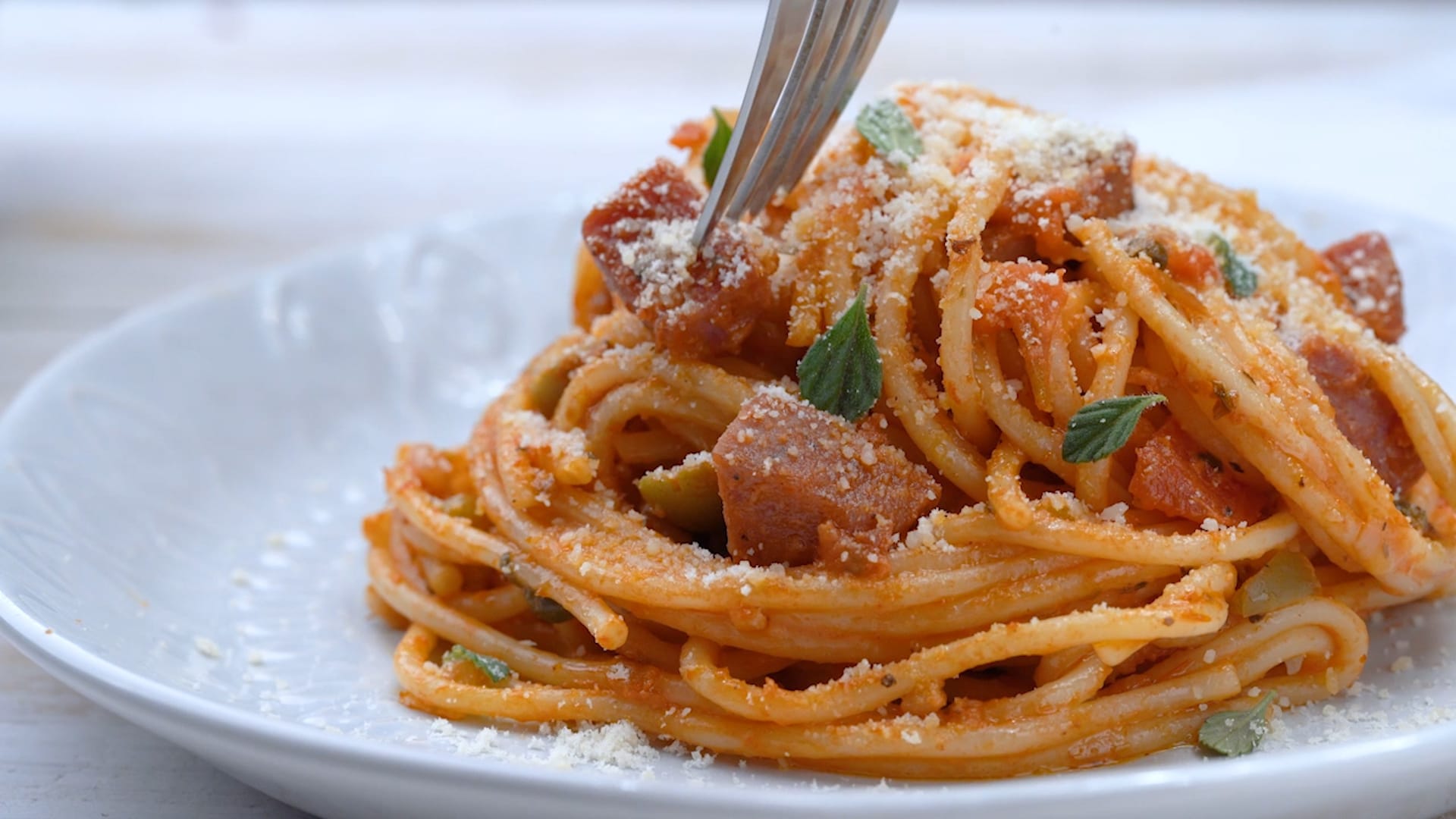 This dish is best served hot. Garnish with the cheese.
This dish is best served hot. Garnish with the cheese.
Video
Tips and Notes
Nutrition
Nutritional information is calculated automatically based on ingredients listed. Please consult your doctor if you need precise nutritional information.
A spaghetti story
Well. This spaghetti was positively bathed in an orange gleam of oil, with shards of green peppers, chunks of salami, and, of all things, vinegar (!) thrown into the mix."
But a bigger shock still was to see the spaghetti sharing a plate with a mound of rice. Where I’m from, spaghetti takes second stage to no other cereal, and carries a meal on the shoulders of its own multifarious merits.
As far as I was concerned, this was nothing less than blasphemy.
I shunned los espaguetis for a long time, turning my nose up at the incognito noodles. Until one day, we loaded up the truck en route to a velorio (or wake) for one of my husband’s relatives in the campo. It took us longer to get there than expected, and when we did, we discovered that the food had run out. Starving, we were given the keys to an aunt’s house, where we proceeded to whip up something quick for our rather large group of children, elderly, and your basically famished adults. The nearest colmado, however, could only offer us one option for an economical and plentiful meal: espaguetis.
Hunger having weakened my resolve, and for fear of appearing the spoiled gringa in the campo, I had no choice but to cease and desist my anti-espaguetis campaign. With a tinge of picante, procured in the form of hot peppers straight from the auntie’s garden, and no rice to upstage the star of the show, I found myself enjoying spaghetti in a whole new way. I think I ate two plates.
If a moral were to be attached to this story perhaps most apropos would be: never judge a spaghetti by its sauce. Or, ask yourselves, what’s in a spaghetti? A spaghetti by any other cooking method would still taste as sweet. Okay, well, not sweet, per se, but just as good. Different, but good. That’s it – ¡viva la diferencia!

Our guest: Jill is Canadian, mother of two Dominican-Canadian children. She lived in Sosua, Dominican Republic for many years, so she gives us an unusual insight into our culinary culture.
FAQs
Dominican spaghetti is made by browning Dominican salami, and cooking it in tomato sauce along with herbs, spices, and vegetables, then adding the boiled spaghetti.
You can use supermarket rotisserie chicken instead of salami in the Dominican spaghetti recipe.
Published Sep 4, 2004, and last revised



